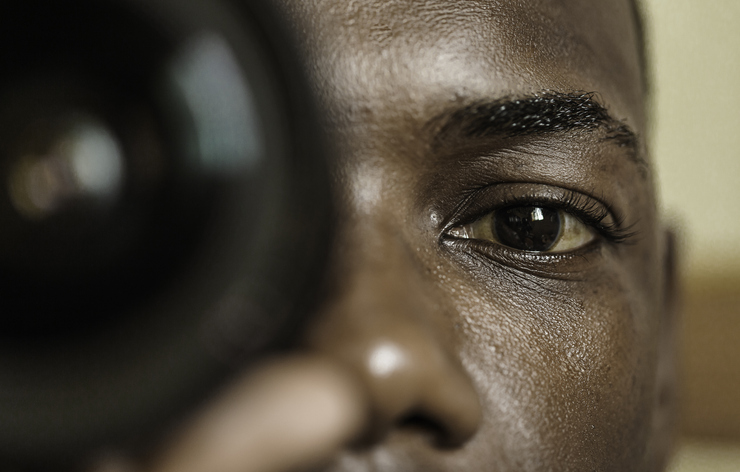How to Pack An Emergency Bag: Everything You Need To Know
Everything You Need To Keep In An Emergency Bag

Source: blackCAT / Getty
Los Angeles is on fire.
Starting on Tuesday, January 7, the Los Angeles Metropolitan Area and surrounding regions have been ravaged by a cluster of wildfires that to date have claimed at least 10 lives and destroyed over 10,000 homes and businesses in Southern California. As fierce winds fan the flames, the fires continue to rage and it doesn’t look like they’ll die down anytime soon, inevitably leading to more heartbreaking loss for thousands of L.A. residents, many of whom have been forced to evacuate their homes at a moments notice, with nothing but the clothes on their backs.
The rest of the nation can only watch the tragedy unfold with overwhelming feelings of grief, empathy, and hopefully, some resolve. Ongoing and irreversible climate change will make natural disasters like this more likely to occur in more places throughout the country, so it’s important to be prepared in case of emergency.
Every household should have an emergency kit or bag prepared in case of a life changing disaster. Having life-saving essentials ready to go can help keep you and your family safe in an uncertain future.
How to Pack An Emergency Bag
Here’s some of what you’ll need for your emergency go bag:
Survival Essentials
Your emergency bag (such as a moderate sized duffle, roller bag, or backpack) should include at least three days worth of non-perishable food supplies, preferably those that don’t require heat to prepare. Think canned goods, dried foods, nuts, etc. Ideally, you should include one gallon of water per person in your household and tin or disposable plates, cups, and utensils. Don’t forget extra food or water for your pet.
Pack a flashlight and matches kept in a waterproof container. Tools like a wrench, hammer, pliers, or utility knife are helpful. Scissors, duct tape, and plastic tarp should be kept in your kit in case emergency shelter is needed as well as sleeping bags or a blanket for each person in addition to a coat or jacket should weather change. Be sure to pack a complete change of clothes for each person, including undergarments, socks, and a sturdy pair of shoes.
Hygiene Essentials
Soap, hand sanitizer, moisturizers, and sanitation wipes should be included in your emergency kit as well as toilet paper and paper towels for keeping clean on the go. Menstruation needs such as pads, tampons, and wipes should also be packed. Pack plenty of garbage or plastic bags to dispose of waste. If an infant is in tow, be sure to include diapers, bottles, or rash creams, enough for at least three days.
Medical Essentials (or Health Essentials)
Pack any medications or prescriptions you take daily in addition to painkillers such as ibuprofen, acetaminophen, or laxatives. Include a face mask for each person in your household to protect from possible dust, debris, or smoke. If you wear glasses or use a cane, keep a spare of your care items in your emergency kit. A comprehensive first aid kit with bandages, creams, and thermometer would also be good to have in your go bag.
Miscellaneous Essentials
Batteries, chargers, and hotspots should be on hand to ensure that all electronics are able to be backed up. If your vehicle is still usable, keep a spare tire and fuel in stock. Keep a copy of important documents such as a passport, driver’s license, social security card, or insurance papers in addition to a list of emergency contact names, addresses, and phone numbers. Have travelers checks or cash in small bills in case credit cards are not useable. Paper and pencil should also be included in case information needs to be documented.
Make a Plan
In the case of an emergency, things may be too hectic or happening too quickly to pack these items at a moment’s notice. So it’s important to prepare your bag before you need it. There may be items that are necessary for your kit that you use everyday such as glasses, identification, etc. Keep a list in a visible place of what you’ll need so you won’t have to rely on memory when disaster strikes. Stay in contact with people you trust who may be able shelter you and have a plan in place with your household of what to do in case of emergency.
Once your kit is packed, reevaluate and replace items in your kit every year. Since you don’t know where you’ll when an emergency happens, keep a version of your emergency kit in your vehicle, at home, and at your workplace, stored in a cool, dry place that’s secure yet easily accessible.
Whether it’s a wild fire, hurricane, snow storm, pandemic, or other unexpected disaster, it’s important to be prepared. It’s better to have what you need and not have to use it, than to be in need and not have anything that could make the difference between life and death.
DON’T MISS…
The Ultimate Travel Guide For Solo Travelers
Maintaining Mindfulness On The Go: Meditation Techniques For Travelers













